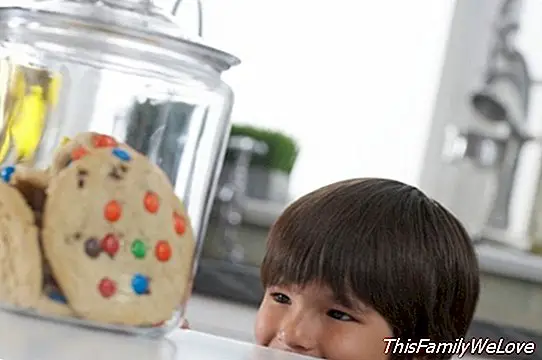The dangers of sweets and sweets in children

The trinkets, sweets and pastries are part of the children's routine, but your intake can be very harmful to your health and the one of the majors since they contain great amounts of sugar and calories that contribute energy but they do not have nutrients. Do you know what the consequences of taking many sweets can be?
For trinkets, jellybeans or pastries we understand a great variety ofsalty and, above all, sweet, They have different but very striking flavors: sweets and sweets (candy, jelly beans), chocolates, snacks (chips, for example) and buns and cookies are the most common, and their dangers are many.
Although it is true that as parents should not be forbidden to take trinkets since it can have the opposite effect (that they want to be banned), it is true that there are ways for children to take sweets in a healthy way. In addition to this, it is important to know what can be the consequences of taking them in a large amount and remember that everyone should follow a healthy diet.
The consequences of sweets
The pediatricians of the Spanish Association of Pediatrics of Early Warning alert that there may be five main undesirable consequences of the abuse of sweets and candies:
1.Inapetencia: Has your child taken trinkets and is not hungry now? Although it may seem that there are few sweets that have been eaten, the truth is that their empty calories (do not provide nutrients) often cause satiety and inability to eat even if it is not really nourished.
2.Caries: the trinkets are the main enemy of oral hygiene since they are mostly a type of sugars that favor the development of microorganisms that attack the teeth.
3. Allergy: According to these pediatricians explain, the additives that give color, aroma and flavor to the trinkets can be accumulated and cause reactions and skin rashes or even asthma.
4.Obesity: the trinkets have many empty calories. As these experts explain, "if the amount of sugars ingested exceeds the limits of storage, the excess of glucose in blood is transformed into fat", which will lead to weight gain and obesity. All this is increased by the increase in sedentary lifestyles in children (hours in front of the television, for example) and bad eating habits (without maintaining schedules, etc.).
5. Threatening: It may not seem like it, but choking is very dangerous in children and, in fact, is one of the most frequent life-threatening emergencies in childhood. It is important that children do not eat nuts until they are more than 4 years old, and that the food is carried out in an orderly routine, not while the child is running, laughing, crying, or speaking with food in their mouth, example.
Keep these complications in mind when you go to reward your child with trinkets and tries to encourage healthy habits on a day-to-day basis in the home, starting with a little physical exercise in the family. You will appreciate it all in the short and long term.
Angela R. Bonachera




